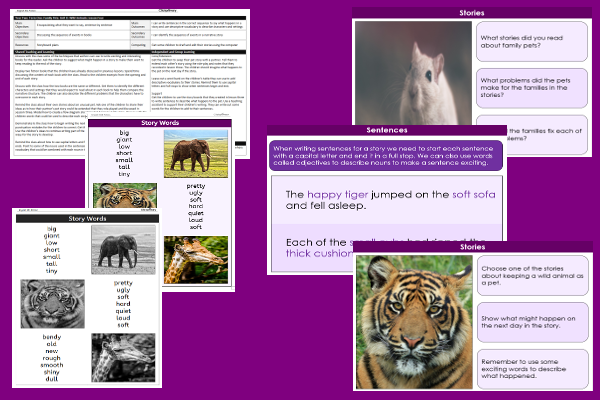Lesson Four – Story Endings

This English teaching pack for Key Stage One gets the children to practise extending a narrative story about keeping a wild animal as a pet by selecting and recording an alternative ending to the plot development and outcomes.
The class can select and use descriptive vocabulary to describe some of the different nouns that have been used in their story writing about a wild animal.
Download this teaching pack including a lesson plan, classroom activities and an interactive presentation to practise extending a narrative story about keeping a wild animal as a pet by selecting and recording an alternative ending to the plot development and outcomes
Activities in this teaching pack include a vocabulary word bank to select and work with different adjectives to use when describing some of the special nouns that have been used in a story about a family who are keeping a wild animal as a pet.
The interactive presentation gets the children to explore how to extend a story about keeping a wild animal as a pet by selecting an alternative ending to the narrative.
This lesson is part of an English scheme of work to get the children to write and edit a narrative story about keeping a wild animal as a family pet, spell words ending in y and select descriptive vocabulary to describe story settings in their narrative writing. There are teaching activities for shared learning, differentiated worksheets to support independent learning and interactive presentations to introduce concepts and key skills.
-

Maths Measurement Assessment
Assess abilities in estimating, measuring and comparing a range of different measurements for length, mass and capacity
-

Family Life
Investigate and reflect on some of the special events and experiences that might happen in the life of a family
-

Final Sounds Word Guess
Practise playing some guessing and matching games to identify the spelling and meaning of words with different final sounds
-

Building Reports
Explore how to collect facts and information to work with when composing and presenting non-chronological reports about buildings that can be found in the local area
